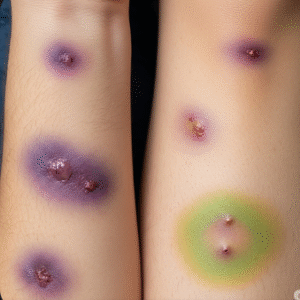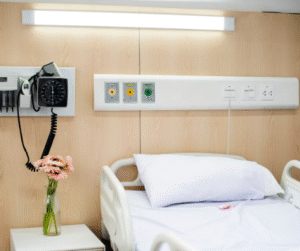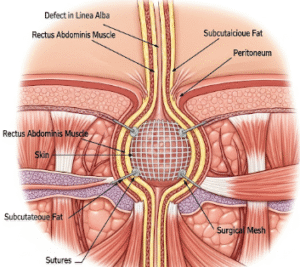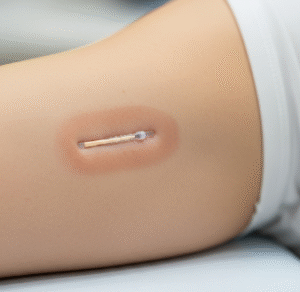What it is
Male sterilisation, medically known as vasectomy, is a permanent method of contraception in which the vas deferens tubes are cut, tied, or blocked to prevent sperm from mixing with semen.
➡ Key facts about male sterilisation:
- ✔ Provides long-term birth control without affecting sexual function, testosterone levels, or ejaculation
- ✔ Can be performed using:
- Conventional vasectomy → Small incision in the scrotum
- No-scalpel vasectomy → Small puncture, less bleeding and faster recovery
- ✔ In Korea, male sterilisation is widely available at urology clinics, hospitals, and family planning centers
💡 Vasectomy is ideal for men who do not wish to father children in the future.
Why it’s done
Doctors recommend male sterilisation for:
➤ Permanent contraception → Men who have completed their families
➤ Alternative to female sterilisation → Less invasive, quicker recovery
➤ Medical reasons → Partner cannot use other contraception or has health risks
➤ Ease and reliability → Compared to long-term hormonal or barrier methods
⚠ Male sterilisation is intended to be permanent, though reversal is possible in some cases but not guaranteed.
Alternatives
Depending on the patient’s needs, alternatives include:
✔ Condoms → Temporary and reversible
✔ Hormonal contraception → For partner use (pills, patches, injections)
✔ Withdrawal method → Less reliable
✔ Female sterilisation → Surgical, permanent contraception
⚠ Vasectomy is over 99% effective, making it one of the most reliable long-term contraception methods.
Preparation
Before male sterilisation in Korea:
🔹 Medical evaluation → Health history, physical examination of scrotum and testes
🔹 Informed consent → Discuss procedure, risks, permanence, and alternatives
🔹 Medication review → Blood thinners may need adjustment
🔹 Fasting → Usually not required for local anesthesia, but advised if sedation is used
🔹 Pre-procedure hygiene → Clean scrotal area, shave if necessary
💡 Korean clinics provide detailed counseling and patient education before the procedure.
How it’s done
➡ Step-by-step vasectomy process in Korea:
- Anesthesia → Local anesthesia at the scrotum
- Access method:
- Conventional → Small incision to reach vas deferens
- No-scalpel → Small puncture using specialized instruments
- Blocking the vas deferens → Tubes are cut, tied, cauterized, or clipped
- Closure → Incision or puncture site closed with stitches or allowed to heal naturally
- Observation → Short recovery time, usually monitored for 30–60 minutes before discharge
💡 No-scalpel vasectomy is increasingly preferred in Korea due to minimal pain, reduced bleeding, and faster recovery.
Effectiveness & Success Rate
✔ Highly effective (>99%) at preventing pregnancy
✔ Immediate effect: Semen may still contain sperm for several weeks; follow-up sperm analysis required
✔ Long-term reliability → Permanent contraception once confirmed sperm-free
Recovery / Expected Outcomes
✔ Hospital/clinic stay → Usually outpatient; patients return home the same day
✔ Activity resumption → Light activities next day; avoid heavy lifting or strenuous activity for 1 week
✔ Pain management → Mild scrotal discomfort, swelling, or bruising
✔ Follow-up → Sperm analysis 8–12 weeks post-procedure to confirm sterility
💡 Most men resume normal sexual function immediately, with full recovery within 1–2 weeks.
Complications / Risks
⚠ Male sterilisation is generally safe, but potential risks include:
➡ Short-term complications:
- Bruising, swelling, or mild pain
- Infection at incision site
- Minor bleeding or hematoma
➡ Long-term complications:
- Rare chronic pain (post-vasectomy pain syndrome)
- Rare failure leading to unintended pregnancy
- Sperm granuloma (small lump caused by sperm leakage)
💡 In Korea, urologists provide careful monitoring and patient education to minimize risks and manage complications promptly.
Treatment Options in Korea (Post-Vasectomy Care)
🔹 Postoperative care → Ice packs, rest, and pain relief as needed
🔹 Follow-up sperm analysis → Confirms effectiveness
🔹 Temporary contraception → Use condoms until sperm-free confirmation
🔹 Reversal options (rare) → Microsurgical vasectomy reversal possible, but not always successful
🔹 Medical support → Urologists available for post-procedure concerns, pain, or complications
💡 Korean clinics emphasize patient counseling and follow-up to ensure safe outcomes and peace of mind.
Top Hospitals & Clinics in Korea for Male Sterilisation
🏥 Seoul National University Hospital (SNUH) – Experienced urology team
🏥 Asan Medical Center (Seoul) – High-volume outpatient vasectomy services
🏥 Samsung Medical Center (Seoul) – Offers minimally invasive no-scalpel vasectomy
🏥 Yonsei Severance Hospital – Comprehensive male reproductive health services
🏥 Community urology clinics – Affordable, accessible sterilisation services
Conclusion
Male sterilisation in Korea is a safe, permanent, and highly effective method of contraception for men who do not wish to father children in the future.
✔ Provides long-term birth control without affecting sexual function
✔ No-scalpel techniques reduce pain and promote faster recovery
✔ Clinics emphasize informed consent, counseling, and post-procedure follow-up
✔ Highly reliable with success rates exceeding 99%
By offering world-class surgical care, patient education, and follow-up support, Korea ensures that men choosing sterilisation can do so safely, confidently, and with minimal disruption to daily life.













